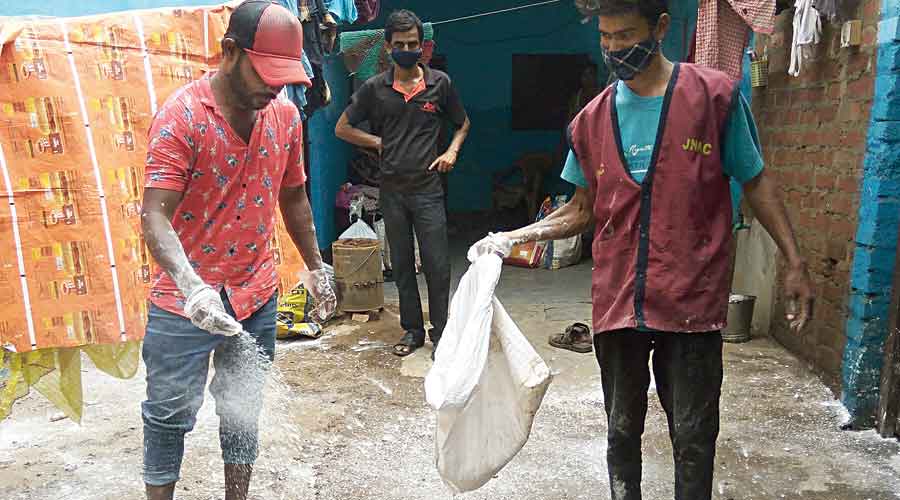Jharkhand health department has riveted attention on carrying out larval surveillance for vector borne diseases especially in the wake of water inundation in several districts due to impact of Cyclone Yaas with the state witnessing only 16 Covid deaths and adding 695 cases on Thursday and registering a better recovery rate of 94.61 per cent (national average is 90 per cent).
Additional chief secretary (health) Arun Kumar Singh has directed civil surgeons and deputy commissioners of all the 24 districts to prepare action for the larval surveillance and prevention of vector borne diseases like dengue and chikungunya. They have been asked to submit by June 10 to the health department and start door-to-door surveillance work for containing the diseases from June 15. He said that because of heavy rains in almost all districts of the state there have been instances of water inundation which might aid breeding of Aedes Aegypti mosquitoes, the vector of dengue and chikungunya virus.
“We are taking several steps to contain the spread of Covid-19 and if there is spread of other viral diseases like dengue and chikungunya then the situation would become grimmer,” the letter warns.
Incidentally, larval surveillance and control is a critical component of any effective integrated mosquito management programme when mosquitoes are eliminated prior to becoming adults and in the process cannot pose disease problems.

Health and municipal personnel spray bleaching powder in water inundated areas at Shastrinagar in Jamshedpur on Friday Bhola Prasad
“Trained field technicians inspect known source of standing water and newly discovered standing water in house-to-house survey and use standard dipping techniques to sample the water for the immature mosquitoes and undertake physical control (destruction or removal of water accumulation points) and chemical control (through spraying of larvicides),” said a source in the National Vector Borne Disease Control Program (NVBDCP) unit of Jharkhand.
The source further said that 2021 is critical in view of the cyclic pattern of malaria, dengue and other vector borne diseases.
“We need to note that malaria and dengue tend to have cyclic patterns and show a trend to spike after 5-6 years and 2-3 years respectively. We have been fortunately witnessing a decline in malaria since 2015 and hence this year may be critical in the given cyclic trend.
“We need to prepare for effective prevention and control of various vector borne diseases throughout the country,” the health official said.
The letter had directed for surveillance against vector borne diseases to be combined with Covid-19 activities in the containment zone, buffer zone and areas outside buffer zone and also creating community awareness on dengue breeding spots. The areas in Jharkhand which are dengue endemic include Ranchi, Jamshedpur, Dhanbad, Hazaribagh, Giridih, Gumla, Pakur and Sahebganj.
“We have prepared an entomological survey format and the health department and municipal department will work together in all the districts as part of the survey,” said state entomology officer Sagya Singh.
On Friday evening, mission director National Health Mission Ravishankar Shukla issued a letter to all municipal officials to help health department in carrying out larval surveillance in their respective command areas.











